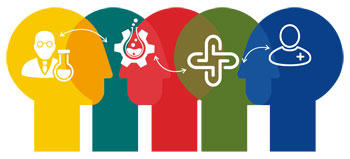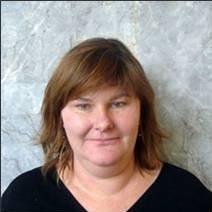NEXUS 2022 EU and NA Recap: A Spotlight on Acceleration, Collaboration and Transformation
Read our recap of Nexus 2022 EU and NA events. Explore the latest trends in accelerating scientific research and digital transformation with Revvity Signals.
Revvity Signals recently hosted two exciting NEXUS user conferences – our in-person get together October 11-12 in Sweden and our virtual October 18-19 NEXUS North America event.
What is NEXUS?
It’s an important gathering fostering connection within our community – bringing together the Revvity Signals team, our customers, partners, and users. It’s where we come together to share experiences and best practices, discuss the latest trends, and review informatics developments.

During these two user conferences, we heard from an outstanding collection of speakers representing some of the biggest names in science, including AbbVie, Ajinomoto BioPharma, Ambrx, Amgen, AstraZeneca, Bayer, Boehringer-Ingelheim, Bristol Myers Squibb, Cogent Biosciences, Corteva Agriscience, Custom Pharma, Eli Lilly, Evotec, Janssen, Merck, Nimbus Therapeutics, Novartis, Pelago Biosciences, Pistoia Alliance, Roche, Scitara, TetraScience, Spotfire, and Revvity Signals. Many of the speakers at the two events represented organizations that have made the digital transformation leap and are now realizing the benefits.
NEXUS ACT: Embracing Acceleration, Collaboration and Transformation
Acceleration was a common theme among presenters, reflecting the real-world value that industry is beginning to extract from their data infrastructures. Another key theme was collaboration and the need to embrace the use of digital technologies across disciplines to improve scientific outcomes. Transformation – whether from legacy systems or paper – was a principal driver for organizations looking to extend collaboration and accelerate research or product development.
>> Keynotes
Keynote speakers at our NEXUS events in Europe and North America explored the future of informatics. From digital transformation and AI/ML to data visualization and collaborative efforts to improve interconnectivity between informatics platforms and other critical digital infrastructure, data – and how we use it – is reinventing how businesses and organizations function.

At NEXUS Europe, AstraZeneca’s Drug Discovery IT Capability Lead David Drake shared the Company’s digital transformation vision and progress as they introduce digital technologies to transform R&D. The outcome to date? Acceleration of the drug discovery process.

Among the keynotes at NEXUS NA, Eli Lilly’s Michael Bem shared insights into using AI/ML in drug discovery research, noting that it is critical to maintain a focus on the problem you are trying to solve, such as a candidate’s progress into the clinic. His takeaway? Leverage AI to dig into the things you don’t know – but others might – to facilitate or accelerate a candidate’s advancement. He also noted during Q&A that informatics solutions such as Signals Notebook are enabling technologies for AI/ML since they work to structure data that AI/ML models can more readily use.

In his keynote on the Power of the Suite, Executive Director of Science & Technology at Revvity Signals David Gosalvez discussed the importance of collaboration underlying the Signals Platform. Two specific areas in particular are working with customers to improve applications and teaming up with partners to build connectors to and from Signals.

Michael O’Connell, Chief Analytics Officer and Neil Kanungo, Data Science Manager, at Spotfire™, highlighted some of the key data visualization design elements used in Spotfire™. Behind intuitive data visualizations lie a considerable range of human perception variables that must be considered – from how the eye interprets differences in sizes and shapes, to how to visualize time and geospatial context and how to best drill down and filter data to simplify interpretation.
Takeaways from Our ELN, Research, Clinical, and Technical Tracks
Here are some key takeaways from 2022’s four days of learning and networking in Europe and North America.
>> ELN Track
NEXUS 2022 Presenters at both conferences shared their experiences with Signals Notebook in both the deployment & use in the lab to improve workflows.
NEXUS EUROPE
Jen Krakejvic described Roche’s experience adopting Signals Notebook in a validated environment, successfully onboarding 2500+ scientists. With some scientists migrating from paper and others from legacy ELN systems, the Company built an ‘onboarding factory’ to manage the process.
Noveal’s Pierrick Ondet spoke of the digitization journey from paper, and how Noveal worked with Revvity Signals services to implement and migrate legacy data and systems to inventory and material libraries. He reported that – one year later – 100% of the company’s users consider the new tools critical, and 95% state it improves their productivity.
Andreas Muheim of Givaudan also spoke about their journey to Signals, migrating from an on-prem ELN. The key highlights for users have been the speed and intuitiveness of Signals, enabling about 1000 experiments per month by their 350 users. A key to their successful transformation has been positioning key user leads to improve adoption and enable innovation.
Custom Pharma Services stands on the opposite bank of digital transformation, on the verge of kick-off. Michele Ghirardi, Formulation Development Manager at CPS, describes the motivations for their shift to Signals Notebook: escaping from paper and improving Quality by Design (QbD) capabilities.
Stan Coene at Ajinomoto BioPharma shared how the CDMO shifted from a paper-based ELN to Signals Notebook to improve reporting small molecule API development and scale up experiment reporting. Ajinomoto configured the system to grant certain customers access to the system to view the progress of finished experiments, reducing ‘lost in translation’ communications with customers while enabling near-real-time scrutiny. The move to SNB also helped them decrease IT bottlenecks and reduce dependency on the IT department for system management.
NEXUS NORTH AMERICA
Joost Brakkee at Janssen spoke about SNAP (Signals Notebook Accelerated Project) – the introduction of SNB to approximately 2,000 Janssen R&D scientists spread around the world. What’s next? The Company plans to increase the number of users, explore the use of the data factory and deploy new features.
Margaret Pancost-Heidebrecht shared how Novartis is using Signals Notebook in a Medicinal Chemistry and Combi-chem environment; replacing a legacy ELN system. They developed custom integrations, including a read-only viewer to enable intellectual property work and a tool to scan the entire repository to identify all synthetic steps leading to a product.
>> Research Informatics Track
From custom integrations to rich visualizations, researchers are leveraging informatics in new ways to simplify, automate and accelerate their work.
NEXUS EUROPE
Rikard Alm examined how Pelago Biosciences is transforming their assay data management system, shifting from Excel, Prism, Scripts & R-shiny to Signals Notebook and Signals VitroVivo with Spotfire™. He shared their rationale for choosing Revvity Signals tools, including the balance between structure and flexibility, automation capabilities and a modern infrastructure which facilitates data integrity and analysis.
Karsten Kottig from Evotec highlighted in his talk the challenges with high volume, high-dimensional data analytics for cell-painting in light of the change from a traditional image data management approach towards integration of predictive data science.
Dr Eva Nittinger took us into the world of AI by presenting how AstraZeneca uses reINVENT, an in-house developed de Novo molecular design tool. During the presentation it was shown how Spotfire™ is used as an important part of the post processing of the reINVENT results in both calculations and visualization.
Michael Munson introduced us to the use of Spotfire™ in the development of Lipid Nanoparticles for Vaccine and targeted Genome Editing at Astra Zeneca. The data to be captured and analyzed in this research area is rich, complex as well as voluminous. Spotfire™ helps the scientists to visualize, explore and share the data effectively by creating these insights to high extend themselves in the application.
AstraZeneca’s Data and Informatics Lead Wolfgang Klute delved deeper into the use of data, exploring the structure of their chemistry compound data and how they are working to better leverage that data.
Research at the frontier of science and technology often demands innovative solutions which are unavailable. In their talk, Spotfire as an Enabler for AI-Augmented Drug Discovery and Development, AstraZeneca’s Justin Morley and Johan Ulander shared the innovative tools they use to rapidly develop applications for which no commercial solution exists. Such solutions entail collaboration across different competences, including data science, informatics and IT.
NEXUS NORTH AMERICA
Rafael Fernandez discussed how Merck is using Signals Image Artist workflows and Signals VitroVivo to manage and simplify the analysis of massive volumes (terabytes per day) of high content screening (HCS) data. He noted that Signals Image Artist and Signals VitroVivo make the whole process of getting results from data possible.
Amgen’s Anjali Bisaria also discussed the deployment of Revvity Signals Opera Phenix High-Content Screening System, Columbus (now called Signals Image Artist), and Signals VitroVivo to develop mini-screening assays. One of the benefits of Columbus in Amgen’s environment is that its 3D image analysis enabled simple QC analysis for assay development.
Garrett Meek’s presentation explored how Cogent Biosciences uses data functions in Spotfire™ in conjunction with supervised machine learning (ML) to avoid using overly-complex calculations in columns.
Corteva’s Sherl Enos discussed the Company’s 18-month collaboration with Revvity Signals on a Cheminformatics Workbench Solution. The result is a platform which delivers advanced query options and visualizations to overlay results with biodata to identify activity cliffs and perform lead generation and optimization.
>> Clinical Track
NEXUS presenters are using informatics in groundbreaking ways for translational analysis, medical data review, clinical trial anomaly detection and more to improve collaboration and accelerate decision-making.
NEXUS EUROPE
Senior Data Scientist Pekka Tiikkainen shared how Bayer is using Spotfire dashboards for anomaly and outlier detection in their medical review system, which is built on top of the RAVEN system. This solution identifies missing clinical datapoints & time series outliers.
In his talk on adding value to clinical data, Pistoia Alliance consultant Giovanni Nisato discussed the state of FAIR (Findable, Accessible, Interoperable, Re-usable) in the clinical space, including how FAIR implementation could add value to clinical trial data. Version 1.0 of the FAIR4Clin guide is planned for release as public accessible resource by the end of 2022.
Ute Burhard from Boehringer-Ingelheim, gave a talk on Visual & Integrated Support of Translational Analysis (VISTA), a system designed to accelerate clinical decision-making using assisted self-service clinical data analysis during studies. VISTA has already supported more than 100 clincal studies over the past 3 years.
NEXUS NORTH AMERICA
Dong Xu at Ambrx shared why Revvity Signals solutions and Spotfire™ were the right fit for real-time medical data review. He explained how RS's platform improved efficacy, efficiency and productivity in a diverse range of applications, including patient enrollment, adverse events, dosing information, and product efficacy.
Bristol Myers Squibb’s Prem Narasimhan explored how large heterogenous datasets demand tools that can accelerate the identification of outliers during clinical trials. This necessitates stakeholder access to data, and the ability to analyze it in real-time with minimal dependency on others.
>> Technical Track
On the NEXUS NA 2022 Technical track, AbbVie and Nimbus Therapeutics explored Signals Platform tools to better manage massive datasets.
AbbVie’s Elyse Geoffroy shared how they improve response time by dynamically generating dashboards as needed, rather than using a single dashboard overloaded with visualizations.
Rebecca Carazza at Nimbus spoke about the use of visualizations in the biotech bundle, and how it helped streamline cross-team collaboration. With centralized libraries, teams can access and import data into Spotfire, allowing users to drill down to the specific data they need. We’re looking forward to seeing everyone at NEXUS 2023. Stay tuned for details!
Missed the presentations? Still time to gain access

Chris Stumpf
Senior Principal Marketing Professional, Revvity Signals Software, Inc.
Chris Stumpf is a Senior Principal Marketing Professional responsible for Marketing Programs at Revvity Signals Software, Inc. Chris has over 20 years of experience in the Analytical Instrumentation and Informatics industry spanning Pharmaceuticals & Life Sciences to Chemicals & Materials. He has a Ph.D. in Analytical Chemistry and Mass Spectrometry from Purdue University.

Mary Donlan, Ph.D.
Executive Director, Product Marketing, Revvity Signals Software, Inc.
Mary Donlan, Ph.D., leads the Product Marketing team at Revvity Signals. She has 20+ years of Life science enterprise software experience in marketing, business development and field applications. She holds a Ph.D. in Chemistry from University of Pennsylvania.
